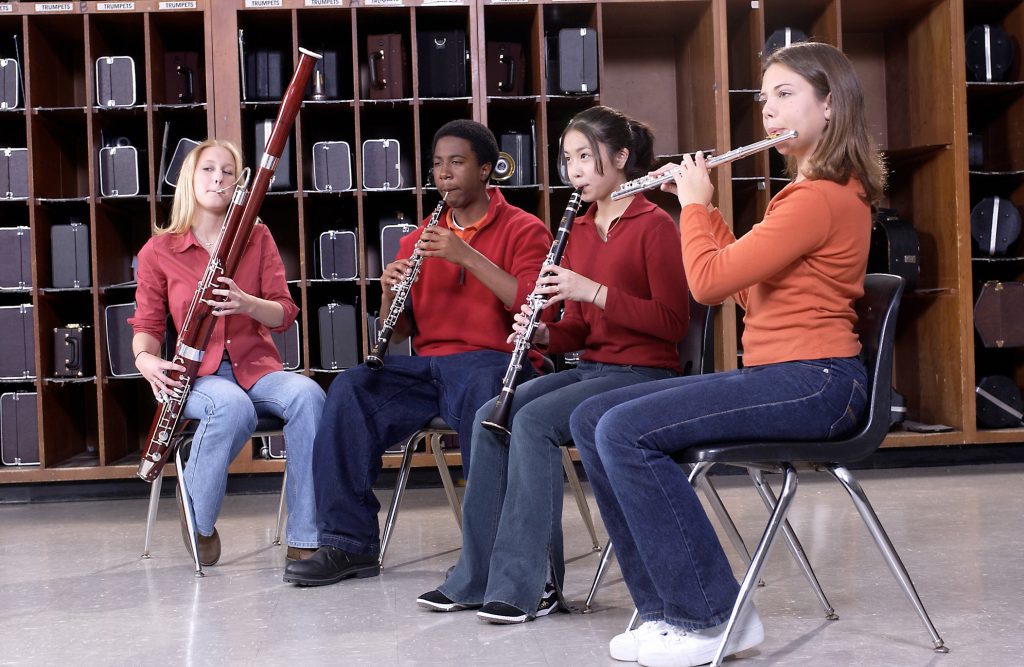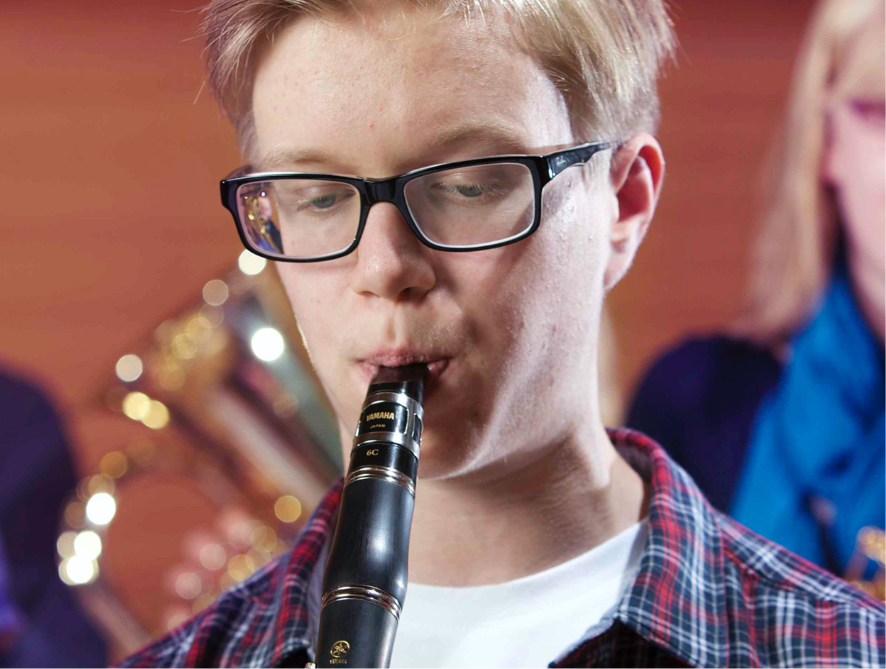Correct Reed Placement and Ligature Positioning
Get the best sound from your clarinet or saxophone.

If you notice that you or your student is having trouble creating a sound on their clarinet or saxophone, it’s best to start at the source — check the mouthpiece! Here are some helpful hints for solving potential problems in terms of reed placement and ligature issues.
Reed Placement
The tip of the reed is typically lined up flush with the tip of the mouthpiece. Depending on the player, the exact position may be slightly adjusted to fit personal preference. There can also be quite a bit of difference from player to player when it comes to the position of the ligature (see below).
Here are two common problems caused by incorrect reed placement:
– Reed placement below the tip of the mouthpiece. This will cause the reed to cave in on itself, causing the sound to be brittle and bright. In some instances, it may result in no sound at all!
– Reed placement above the tip of the mouthpiece. This will cause the reed to feel much stiffer or harder than it was intended to, resulting in fatigue for the player. In addition, the sound will be diminished, both in terms of volume and quality (there may be a fuzziness to the tone).
Centering the reed is always tricky, especially for less experienced players. I recommend slipping the ligature over the mouthpiece and then guiding the reed into place gently.
Ligature Positioning
A ligature is basically a clamp that holds a reed in place on the mouthpiece. Finding the best fit and style of ligature is very subjective, especially since there are many different types of woodwind mouthpieces with varying outer bore dimensions. For that reason, there may be some trial and error involved in locating the right ligature for your playing style.

In particular, the front part of the uncut / bark section of the reed is very important in that it needs to be in good (and consistent) contact with the table (the flat portion) of the mouthpiece. Your ligature should help maintain that contact without smashing the reed and causing excessive indentations. If you notice spit or moisture coming out of the sides of the reed from about halfway up the “vamped” (cut) section of the reed (i.e., where it comes in to contact with the mouthpiece) to the bottom of the reed, then either the ligature is not creating a good hold on the reed or the reed is warped.
Advanced clarinetists especially should check to make sure that they can grasp the ligature and move the mouthpiece to an A clarinet if necessary, without the reed moving or the ligature coming off.
Click here for more information about Yamaha clarinets.
Click here for more information about Yamaha saxophones.















